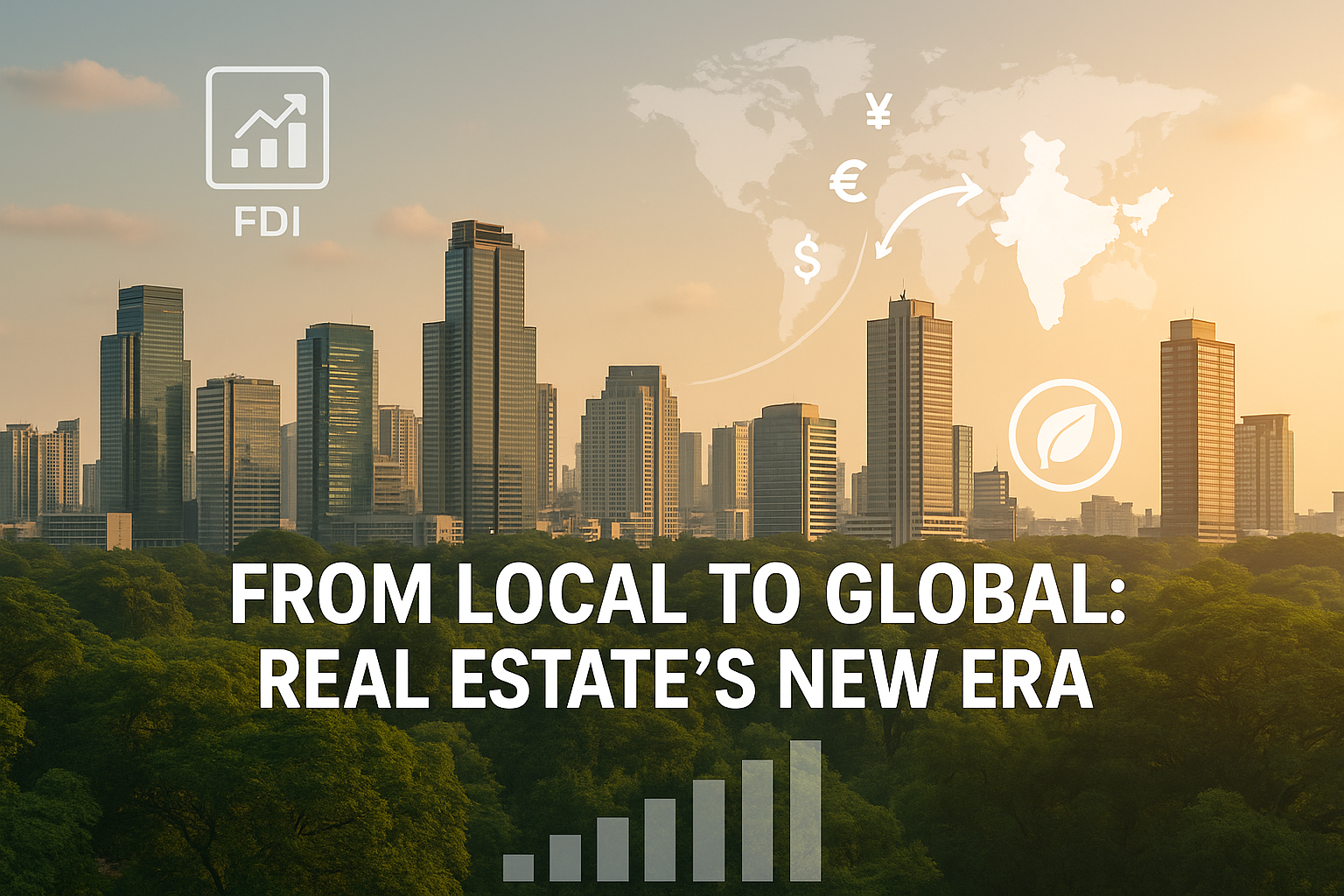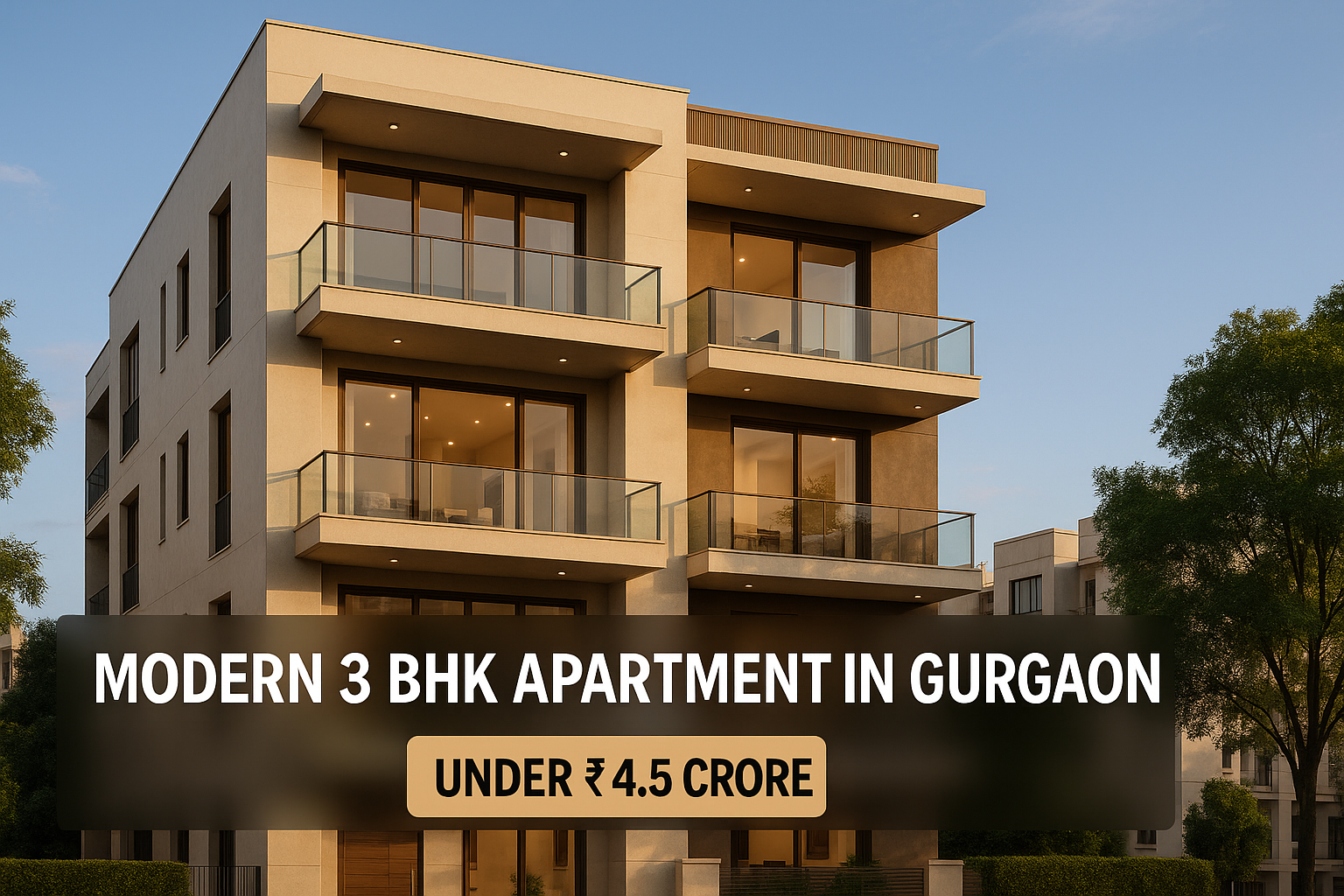Q1 2025 Sees 30% Jump in FDI
Foreign Direct Investment in Indian real estate surged by 30% in Q1 FY25, hitting $1.3 billion, according to Colliers. That puts India at #7 among global destinations for cross-border real estate investment an impressive jump onto the world stage.
What’s Powering the Foreign Inflow?
- Digital Economy Unlocking Real Estate: Digitisation is transforming efficiency in land acquisition, approvals, and project delivery making India more accessible to global capital.
- GCCs & Commercial Expansion: The rise of Global Capability Centres (GCCs) is fuelling demand for office spaces across cities, attracting both investment and infrastructure development.
- Top-10 Global Ranking: Colliers included India among the top ranking global hotspots for land and development alongside markets like Japan and Australia.
Commercial Real Estate: A Star Player
While residential developments ride local demand, commercial real estate is drawing major global investors. US firms are aggressively expanding in Mumbai and Bengaluru not just buying space, but building infrastructure to support these GCCs.
This trend has ripple effects:
- Higher-quality office projects
- Stronger rental yields
- Broader investor confidence in India’s urban ecosystem
Asia-Pacific Shift: India Gains Ground
Asia–Pacific remains the world’s hotspot for real estate FDI accounting for 7 of the top 10 global destinations in land and development. India landing at #7 confirms the region’s dominance and India’s improving position.
Why It Matters to You – Homebuyers & Investors
- Better-quality developments: International capital brings cleaner designs, timely delivery, and stronger governance.
- Improved infrastructure: Office hubs with global occupiers means better roads, transit, and amenities for surrounding residential zones.
- Performance push for developers: To attract FDI, builders must sharpen delivery timeframes, certifications, and transparency.
- Resilient rental markets: Global companies mean steady demand from executives, managers, and staff relocating to Indian hubs.
Smart Moves to Ride This Wave
- Watch the Commercial Corridor: Spots like Bandra Kurla Complex (Mumbai) or Bellandur (Bangalore) are seeing GCC-driven office growth that boost residential demand nearby.
- Look for modern certified projects: Builders financed through global capital often lead in green buildings and smart infrastructure.
- Choose integrated townships: When offices, transit, and housing coexist that’s where capital chase yields and rental strength.
- Track FDI flows quarterly: A fresh report next quarter will reveal whether this FDI surge was a one-off or part of a larger trend.
Quick Stats at a Glance
| Metric | Highlight |
|---|---|
| FDI in real estate (Q1 FY25) | $1.3 billion (+30%) |
| Global Ranking | India rises to #7 in land & development |
| GCC Expansion | Strong deals in Mumbai & Bengaluru offices |
| APAC Region Dominance | 7/10 top markets in Asia-Pacific |
Bottom Line
India’s real estate is more than just local it’s trending global. With digital reforms, office-led growth, and strong global interest, the stage is set for higher returns, better quality, and stronger infrastructure.
Estate Brief readers: If you’re investing, building, or planning, now’s the time to align with FDI-fuelled corridors and smart growth zones. India isn’t just participating in global real estate it’s dominating it.
FAQs
Q1: Is $1.3 billion FDI just for Q1 or the whole year?
That’s the figure for Q1 FY25 alone a strong indicator if sustained, it points to a blockbuster year for overseas investment.
Q2: Why are GCCs driving real estate?
GCCs bring jobs and demand for office space, which in turn creates commercial zones that attract residential, retail, and infrastructure investment.
Q3: What does India’s #7 ranking mean?
It means India is now seen as a top destination for real estate capital globally along with mature markets like Japan and Australia.
Q4: What kind of properties benefit most?
Commercial offices, green-certified mid-to-high-end residential, and integrated townships near transit and offices see strong upside.
Q5: How can individual investors use this insight?
Align your property purchase or investment with commercial corridors seeing FDI better quality, stronger demand, and capital-backed growth


